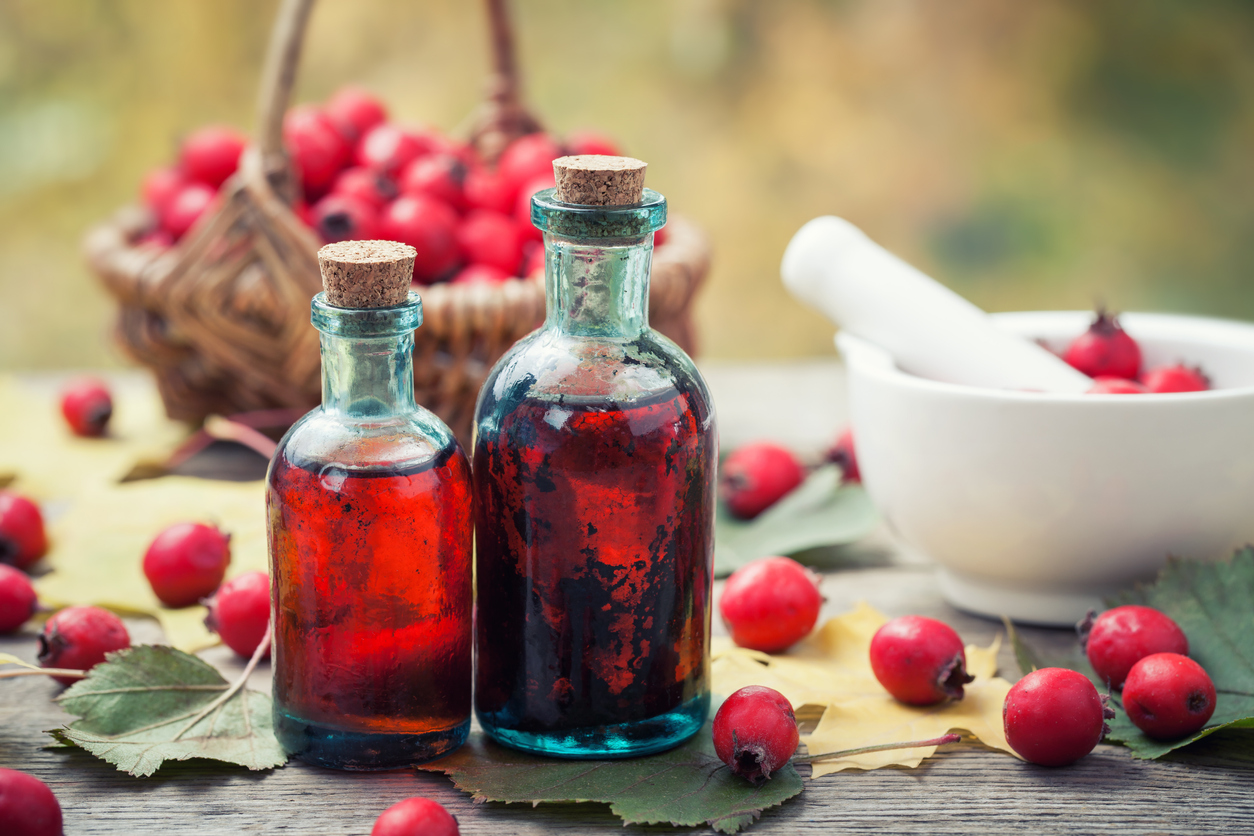Hawthorn as an Herbal Remedy

The Bottom Line
Hawthorn has long been used in Chinese and Western medicine to treat various illnesses. The most studied use of hawthorn is for congestive heart failure (CHF). Its effectiveness for CHF and other conditions is limited, but so is its toxicity. However, it is always best to consult with your primary care provider and pharmacist before starting any herbal regimen to avoid any potential interactions with prescription or over-the-counter medications.

The Full Story
Hawthorn plants are classified in the Crataegus genus and the rose family and includes hundreds of types of shrubs and trees. Other names for this plant include quickthorn, may flower, shan za, and crataegus berries. Hawthorn is native to northern Europe but is grown throughout the world. Hawthorn plants are found as thorny shrubs or small trees that have bright green leaves, white flowers, and red berries.
Hawthorn fruit is used in Chinese traditional medicine to improve digestion, blood circulation, and to treat heart problems such as high blood pressure and high cholesterol. The dried fruits used to improve digestion are typically made into jams, jellies, candies, or wine. In European herbal medicine, hawthorn is the oldest known medicinal plant. The fruit, leaves, and flowers are typically used as a heart tonic, an astringent, for muscle spasms, and for high blood pressure and high cholesterol. The leaves, berries, and flowers can be used to make liquid extracts usually with water and alcohol. Dried extracts can be prepared as capsules or tablets.
The most studied clinical effect of hawthorn is its use in chronic congestive heart failure (CHF). However, results from studies are not consistent, and more data are needed to establish its use. In a large study conducted in 2008 it was found that hawthorn used in combination with standard CHF drug therapy increased exercise tolerance and improved symptoms of fatigue and shortness of breath compared with placebo. However, another trial in patients with CHF tested a hawthorn extract against a placebo and failed to show a benefit when hawthorn was given along with standard drug therapy.
Overall, hawthorn is well tolerated. The most commonly reported side effects associated with hawthorn include dizziness and vertigo. Other less common side effects include nausea, fatigue, sweating, fast heartbeat, headache, shortness of breath, and nose bleeds. The only contraindication to hawthorn is a known allergy to Crataegus products and plants. It should not be used during pregnancy because of potential uterine stimulation, nor is it recommended during breastfeeding.
There have been no case reports of serious overdose with either hawthorn berries or with dietary supplement products. However, it is always best to consult with your primary care provider and pharmacist before starting a hawthorn regimen to avoid interactions with prescription and over-the-counter medications. If you are taking digoxin or any antiplatelet, anticoagulant, or blood pressure medications, consult with your primary care provider and pharmacist since studies suggest that hawthorn might interfere with these medications.
If you suspect someone has unintentionally taken too much or is experiencing side effects from hawthorn, get help online with webPOISONCONTROL or call 1-800-222-1222. Both options are free for the public, and available 24 hours a day.
Diana Pei, PharmD
Certified Specialist in Poison Information
Poisoned?
Call 1-800-222-1222 or
Prevention Tips
- Have all your plants (indoor and outdoor) correctly identified by a knowledgeable expert.
- Keep all plants and herbal medications out of reach from children and pets.
- Consult with your pharmacist and primary care provider before starting a hawthorn herbal regimen to avoid interactions with prescription and over-the-counter medications.
This Really Happened
Two children aged 3 and 4 years both ate some hawthorn berries from their backyard. Both children had no symptoms 20 minutes after ingestion when their mother called Poison Control for guidance. Poison Control recommended watching for any severe and persistent symptoms like vomiting and diarrhea. A follow-up call was made to the mother, and she said that no symptoms had appeared.For More Information
Hawthorn. New York: Memorial Sloan Kettering Cancer Center; updates 2021 Jul 8 [cited 2021 Nov 25].
References
Chang Q, Zou Z, Harrison F, Chow MSS. Hawthorn. J Clin Pharmacol. 2002;42:605–12.
Dahmer S, Scott E. Health effects of hawthorn. Am Fam Physician. 2010 Feb 15;81(4):465–8.
Grieve M. Hawthorn (a modern herbal). Botanical.com [cited 2021 Nov 26].
Hawthorn. New York: Memorial Sloan Kettering Cancer Center; updated 2021 Jul 8 [cited 2021 Nov 25].
Poisoned?
Call 1-800-222-1222 or
Prevention Tips
- Have all your plants (indoor and outdoor) correctly identified by a knowledgeable expert.
- Keep all plants and herbal medications out of reach from children and pets.
- Consult with your pharmacist and primary care provider before starting a hawthorn herbal regimen to avoid interactions with prescription and over-the-counter medications.
